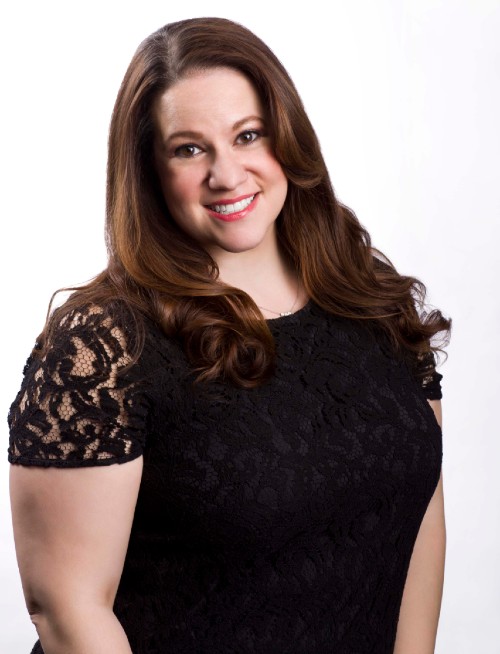 Today, students interested in influencer marketing have dozens of colleges and degree programs to choose from to help them break into the industry. But that wasn’t the case when Samara Finn Holland, senior vice president of influencer marketing at Kaplow, was in school. Samara had to find her own way into the emerging industry of influencer marketing.
Today, students interested in influencer marketing have dozens of colleges and degree programs to choose from to help them break into the industry. But that wasn’t the case when Samara Finn Holland, senior vice president of influencer marketing at Kaplow, was in school. Samara had to find her own way into the emerging industry of influencer marketing.
While being a pioneer in any industry is difficult, transitioning from PR to influencer marketing felt natural for Samara because of her love for building relationships and telling stories. So heat up that LeanCuisine (or DoorDash some Chipotle?) and hit play on this episode of the Perlu influencer marketing podcast to learn how she matches brands with the right voices who can tell their story best for authentic influencer marketing experiences.
Interview with Samara Finn Holland
Perlu: Hello, and welcome to the Perlu podcast, influencer marketing re-imagined, a podcast where we chat with influencer marketing professionals, social media influencers, bloggers, YouTubers, podcasters, you name it, about what has led to their success.
I’m your host, Alexis Trammell, and today we’re speaking with Samara Finn Holland, senior vice president of influencer marketing at Kaplow. Kaplow is a full-service PR agency offering marketing and communication services across traditional, digital, and new media. They specialize in brand building, media relations, influencer engagement, social media consultation, executive thought leadership and event planning.
Samara’s been working with influencers for over a decade, and her expertise spans from consumer, beauty, and lifestyle to health and wellness. Her role at the agency is to develop innovative influencer marketing campaigns by creating authentic partnerships that achieve a brand’s business objectives. Samara’s focus, and quite frankly her passion, is identifying the right voices to be paired with the right messages on the right platforms for maximum impact. Thank you so much for joining us today, Samara.
Samara Finn Holland: Thank you. I’m so excited to be here. This space of influencer marketing is such an exciting place to be working in, and anytime I have the opportunity to talk about it, you can always count on me.
P: Awesome. Great to hear.
How did you get your start in the influencer marketing world?
S: For me, it was a very natural, easy progression. I always tell people I do a lot of mentoring in the space, and I always tell students that I’m mentoring that the job that I have today is not one that existed while I was in school. It was not something that I was even studying in college. I started out on the public relations side of communications, which I did study in college. But I always loved crafting unique storytelling opportunities and also building deep relationships with editors at different media outlets.
So as the space sort of evolved into more digital opportunities, I saw an opportunity and really decided to pivot. Just personally, I was always pretty much a fairly early adopter to social media, which is interesting because I’m not always an early adopter to technology, but interconnecting, chat, email, RSS feeds, blogs, Facebook, social networking – all of those different ways to connect online just naturally connect with me as a person. And so when I saw that I could add that into my career and shift gears a little bit, that’s kind of the path that I took.
Are You New to Perlu or Just Ready to Step Up Your Influencer Marketing Game? Schedule a Demo!
<As a Brand> <As an Influencer>
When I started kind of expanding communications and media relations to the online world, it was a lot of working with emerging bloggers. I mean, I’m going back to like 2005 here, but that has turned into a real-world of opportunity for content creation, unique ambassador programs, the power of word of mouth and that where I’ve been and what excites me about staying in the space and seeing the changes over the years.
P: That’s great.
How does Kaplow approach influencer marketing differently than other agencies?
S: Yeah, that’s a great question. At Kaplow, we truly believe that influencer marketing is an extension of communication strategy. It’s not just a siloed distribution channel. So when we’re looking at influencer programs, we’re thinking about that on the onset of strategy and onset of program development. It’s not an afterthought.
I would say there are four key ways that I think set Kaplow apart when we’re developing that integrated influencer strategy. First off, we really look at what I call the whole ecosystem of influence that surrounds our client’s consumer target. That can be everything from experts, subject matter experts, authors, designers, stylists. It’s also content creators. But I feel like in today’s day and age, when you hear “influencer”, you kind of automatically go to a platform, YouTube, Instagram, bloggers. And while most of the creators and influencers that we do work with have that deep, rich online content that they’re creating and have a robust following, we just like to really think of a broad definition of influencer.
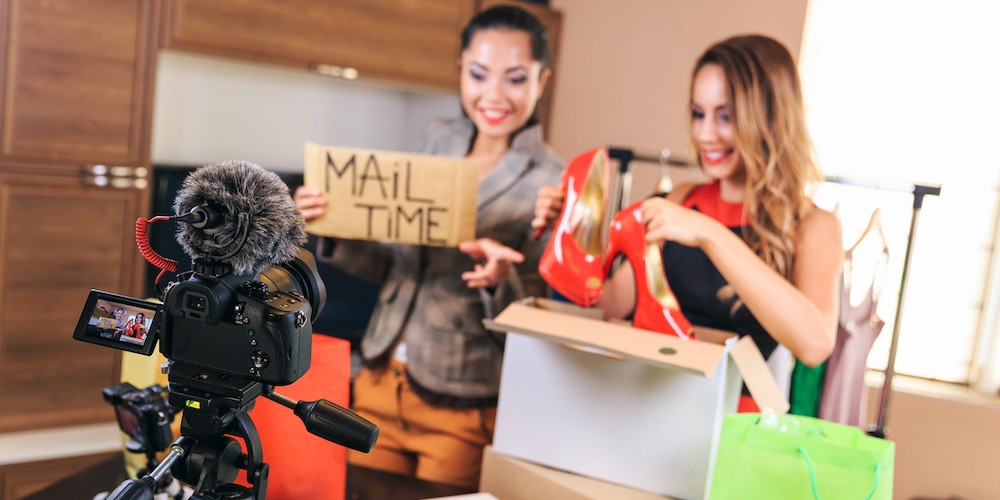
Another place that that can play is when you’re thinking about big corporations or brick-and-mortar where there’s a sales force, those individuals who are your employees are also influencers you can consider. So I would say that that first step is looking at all of the different ways that consumer behavior has changed and who those voices are that are driving that change.
Secondly, we spend a lot of time thinking about specific influencer roles and defining them. If we’re looking to drive mass awareness as the business objective, that’s a time that we’re really going to be looking in the macro influencer arena, looking for those really highly followed creators, celebrities that can drive scale, mass awareness. But there’s a lot of times that we’re looking for maybe engagement and deeper conversation and consumer action, and that’s going to be a different tier of influencers that we activate.
Maybe a big focus for a client or a brand is education and credentialing. Then we need to look at a true expert, someone who can drive that expertise and credibility on a specific topic.
I would say that no matter what the role at Kaplow, we take identification extremely seriously. We view vetting as an in-depth background check, essentially. We want to make sure that the following is authentic and engaged, that creators naturally line up to brand equity of the program we’re working on, and that’s a big part of what we do at the agency, making sure we’re making those rights selections.
Like Kaplow’s Approach to Influencer Collaborations?
Connect with Kaplow on Perlu Today!
The third thing, and I don’t want to go on too long, is really a measurement and looking at how to demonstrate the ROI of influencer marketing. It’s such a very hot topic and when we evaluate the success of programs, we’re really looking at metrics and benchmarks at the beginning of the program from both a qualitative and quantitative perspective. So everything from link tracking to demonstrating an increase in consideration to affiliate links to share a voice and engagement rates, looking at all of those key success metrics.
And then, lastly, it’d be amiss if I didn’t mention that coming from the public relations side of things, we also look to see where we can integrate our influencer programming with larger client campaigns from a media perspective. Is this influencer someone we can set up interviews with in traditional media? Are they someone who might be hosting an in-person event? So looking at those in-person opportunities to bridge the real world and the digital world and determining if there are other media or spokesperson type of extensions that our influencer programs can naturally lead to.
What kinds of clients has Kaplow worked with in the past?
S: We do a lot of work in the beauty space. We also have a robust home and design roster of clients within our lifestyle pillar, and we also have extensive expertise in health and wellness. I think what makes Kaplow such an amazing place to work and an agency that has so much expertise is that we’ve worked in a really robust mix of heritage, legacy brands, but we’ve also done a lot in the direct-to-consumer and startup or upstart arenas. And there’s a real natural exchange of information when you’re looking at startups that are looking to learn from those heritage and legacy brands, and then looking at the way that those heritage brands are looking to disrupt the industry the way startups are.
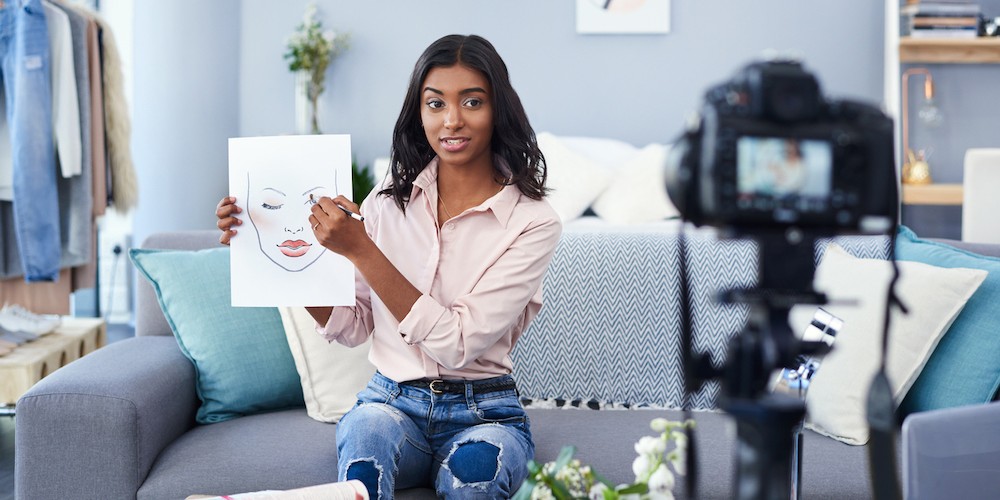
What would you say are some of the biggest pain points that you’ve experienced in this industry?
S: Yeah, I think there are a few that come to mind. I’ve heard on other episodes, there’s been that deep discussion about the human to human type of industry that influencer marketing is. You’re dealing with real people every single day and even though you’re developing business partnerships and business relationships, there’s that strong human component.
I would say that there are probably a few different pain points I experience. One of them is really cracking the code on how to properly scale influencer marketing efforts.
I feel very strongly that you can’t buy influencers or buy influencer marketing the same way you buy paid media.
As much as you want to do more and grow and scale, you kind of have to overcome the challenges of how to do that effectively without sacrificing the quality of the creators and the impact of the content. So I would say scaling and volume in the influencer space is probably one of the main pain points. I talk a little bit about measurement, and I would say that can also be a pain point. I would bet you would agree with that.
P: Oh yes.
S: I think that we’re so fortunate to have the opportunity in the digital space to track so many metrics, but what I find to be harder to demonstrate is really that qualitative, that magic that happens when you’ve found the right partner who’s adding that credible voice to the right message. Sometimes the number doesn’t tell the whole story, and I think that can be a very challenging thing to overcome when you have different stakeholders coming from the communication side, coming from the marketing side. You kind of have that gut that you know that this was the right creator, the right influencer, and the right content. But that storytelling and measurement is something that I think we deal with every day, and it’s a challenge that… We want to challenge ourselves to be better at defining the success of those programs through so many different lenses in that space.
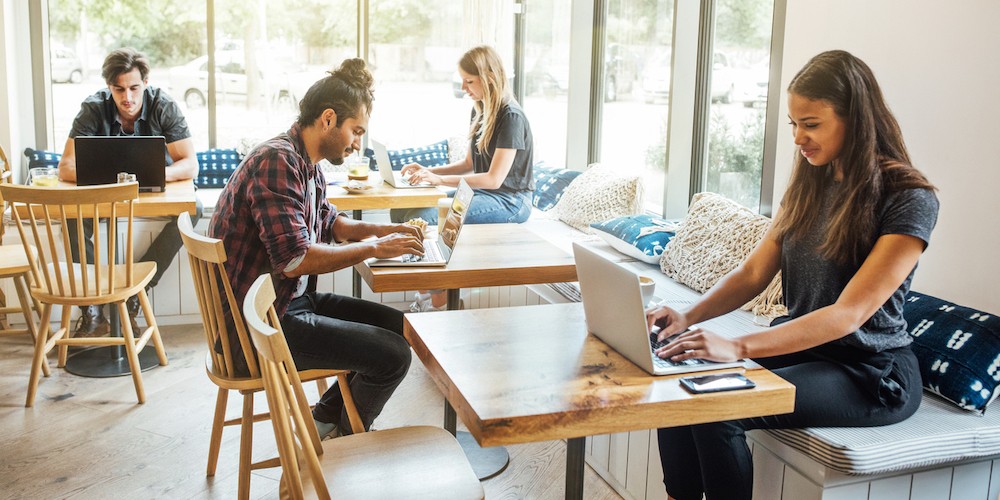
And then I would say, I guess the last piece, and I don’t know if you’ve experienced this yourself, there’s an interesting phenomenon happening where kind of the general public is hearing so much more about influencers, but unfortunately you’re hearing a bit more of the negative stories related to the influencer marketing space. And there’s so much good in this industry and there’s so much impact happening, it sometimes feels a little unbalanced to me when it comes to the sentiment happening around the industry conversation. And I do feel it’s really up to us as practitioners to be that much more diligent about our vetting and partnerships and spreading the good word about the power that influencers have.
P: Absolutely, yes. That’s great to hear.
Could you tell me what a successful relationship with an influencer partner would look like to you?
S: Yeah, that’s a really good question. I think that successful influencer relationships and partners for me are really interpersonal relationships. They’re built on that trust, and respect and they’re also mutually beneficial. I think true partnerships kind of have that give and take. There’s a lot of negotiation that happens between getting the right content and making the partnership as great as it can be.
I also think it’s important to allow influencers to stay true to who they are. We’re not in the business of just giving someone a message and telling them to say it back. We need to trust their creative direction, trust our own choices in influencer, and really believe in the power that they have to convey the key points and what we need to kind of get across in the best way for their community.
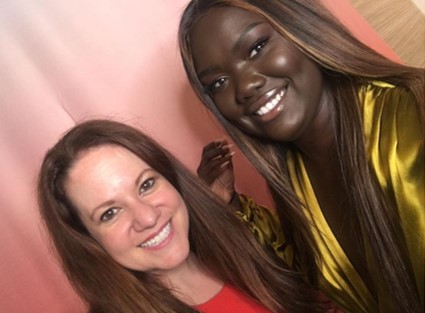
National Selfie Day with Influencer Nyma Tang
I also think at Kaplow we’re always looking at programming from both a partnership perspective, but also what we would call in the PR space and earned perspective. We have opportunities to create events and develop experiences and provide access and there are a lot of influencers who I think still see a lot of value in that. So when I can work with a partner and both have them come to an event because it’s a brand they love and something they want to learn more about and that we’re giving them something of value in that, as well as then working with those same creators in a more formalized incentivized partnership, I really love to be able to work with influencers in that way.
P: So I think you touched on this a little bit earlier: there’s been a lot of talk in the influencer marketing world about how influencers have become synonymous with Instagram. But…
You and I both know that there’s so much value to be drawn from all types of influencers, particularly written content. Could you share your thoughts on this subject?
S: Absolutely. I think that this is probably the topic that spends the most time in my brain. I probably spend the most time thinking about that because it’s been so out of this world and interesting to see how Instagram has been a huge driver in the evolution of the influencer marketing space. I mean, you’re able to create content so much more quickly. Consumers are consuming at record rates. There’s so many more real-time opportunities, and there’s really a lot of power on that platform.
But with that said, and pretty much what you noted in this question, is that there’s also a lot of value that we see in programming that balances both the long-form and short-form content. I think it goes back to truly what a brand is looking to achieve and what role those influencers are playing in that larger marketing strategy.
I find it hard sometimes to tell a really robust in-depth story in short-form content. I think if you’re trying to change consumer opinion or educate on a product’s benefits, you just inherently need more space to do that.
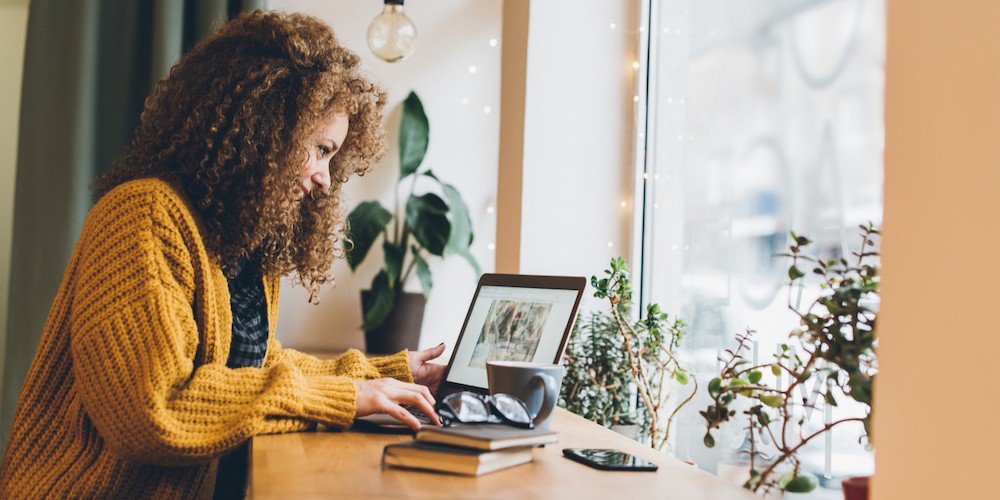
I also think another key consideration is the value that blogs in particular really bring to the table from an SEO perspective, from a discoverability perspective. I mean, there’s a lot of programs I have worked on where you’re looking to reach a consumer in that moment where they’re actively seeking out a solution to a problem. And I’ve seen a lot of success working with bloggers with those highly search engine friendly platforms in delivering content that then lives on forever and continuously is served up.
I think YouTube also has become the second Google. So when people are looking for information on a topic or a brand, they go to YouTube. There’s a lot of value in activating YouTube content creators in that way as well.
Most recently at the agency we have been doing more in the affiliate space and what we’ve learned, and I’m sure you can also have had similar experience, is that you really need link longevity to start to see traction and volume when it comes to digital clicks and consideration and affiliate opportunities. So looking at blogs, looking at YouTube description boxes is really an opportunity to have that link longevity and to be able to prove the value of influencer impact even more.
I like to really think big and broad when it comes to who are those megaphones for any program that I’m working on? And I think that you really need to put the platforms first in that thinking.
P: Definitely.
What kinds of influencers do you typically partner with? What do you typically look for in your partners?
S: I feel like I could talk for an hour on this topic because it’s really hard to lump together, the kinds of influencers that we typically partner with, because it really is so varied. It’s so customized per client and per initiative. As I mentioned earlier, we work with everyone from micro-creators to subject matter experts to social stars and to celebrities and even employees who serve as those brand ambassadors.
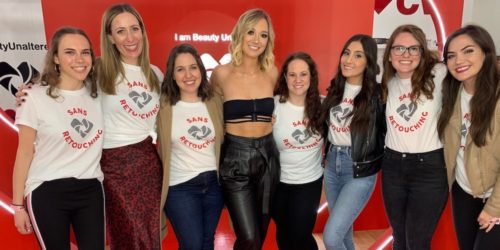
At Beautycon with influencer Alisha Marie
I think we always align on criteria first. I mean, I think that’s kind of a best practice in the industry to make sure that you’re really thinking about who can match the brand equity of a certain program, what you’re looking for in terms of engagement and content aesthetic, what a personal connection might be to a brand already, what influencers drive the most influence on a specific topic?
For us, our identification process is really a mix of art and science. Looking at the data that’s available and looking at those core quantitative metrics, but then also taking a deeper dive and vetting for authentic following and those other points about connections to the brand, I think are really, really important. And that really spans the gamut for us at Kaplow for beauty influencers that are tutorial experts to health and wellness influencers who are coming at it from more of a credentialed place to those types of experts and stylists and designers who have larger partnerships and are creating lines with some of our clients.
P: Great, great. Well, you’ve been in the influencer game for a long time now, and you’ve worked with a wide variety of brands.
What’s the best piece of advice that you could give to someone who is breaking into influencer marketing?
S: I think the biggest piece of advice is to be curious. In this industry that is changing every single day, the industry could have an entirely different face a year from now, the more curious that you can be about the evolution, the smarter you’re going to be in executing and planning strategies for brands and clients.
I think it’s also really important to immerse yourself in the space. You need to follow the right people, consume influencer content. You have to be a consumer of it to understand how to create it, really thinking big again about what the definition of influencer really is. I think that there are really amazing networking events happening more and more frequently that allow you to connect with others in the industry who are learning as they go, and also connecting directly with creators and influencers and building those relationships online in addition to the digital world.
I have to say that something that I loved about this industry in the last few years is that the information exchange that’s happening in networking, be it at in-person events or Facebook groups, has really taken off. I’ve made a career change in the last few years, and so many of the people that I used to work with, we still have that open dialogue where we’re able to talk about the challenges that we’re seeing, exchange information on the right partners and vendors that are out there and platforms. And that sort of universe of information exchange is something I rely on probably every single day.
P: Well, thank you so much. Thank you for all of this great info. This was very valuable to our audience, Samara. This was such a pleasure to speak with you today.
S: Great. Thank you so much for having me.
P: Thank you to everyone listening. If you like our show and are interested in what it takes to succeed in influencer marketing, check out our blog at blog.perlu.com for more podcasts and blog posts and sign up for Perlu at perlu.com to meet, mingle, connect, collaborate, and grow your career. We hope you join us for our next episode of the Perlu podcast, influencer marketing re-imagined.

